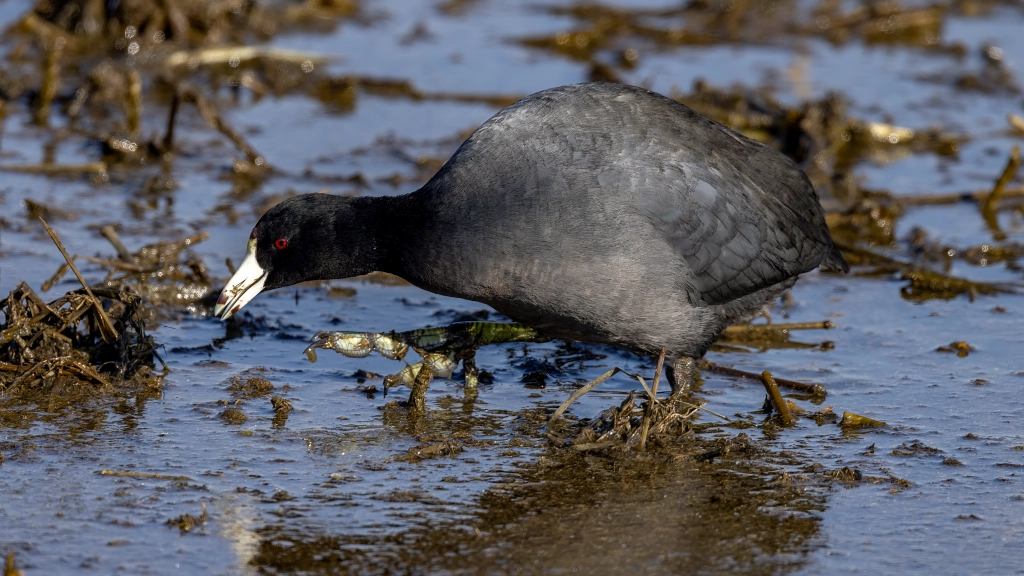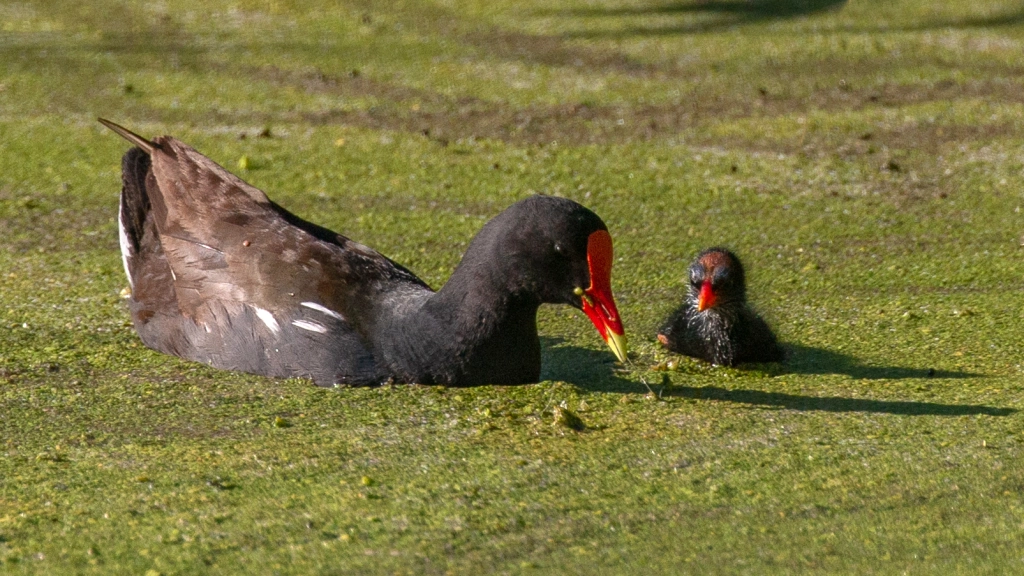An educator and naturalist, Jim Gain is also a superb photographer. We’re proud to publish his series, “Learn 100 Common Valley Birds.” Here is post #22. Be sure to visit Reflections of the Natural World for more of Jim’s fine work. ed.
American Coot – Species #34
Commonly known as the “mud hen” or “mud duck,” the American Coot, (Fulica americana), is a common waterbird of the Central Valley. These birds have a distinctive appearance with a rounded, chicken-like body, black plumage, and a white beak. They also have unique lobed toes, which help them swim and dive in the water.
American Coots are social birds that gather in large flocks on freshwater lakes, ponds, and marshes throughout the year. They are omnivorous and feed on a variety of aquatic plants, invertebrates, and small fish.

During breeding season, they build floating nests in dense vegetation near the water’s edge and lay a clutch of 8-12 eggs. The chicks are precocial and able to swim and dive within hours of hatching. Overall, American Coots are an important part of the Central Valley’s ecosystem and a common sight for birdwatchers and nature enthusiasts alike.
Common Gallinule – Species #35
The Common Gallinule, (Gallinula galeata) formerly known as the Common Moorhen, is a medium-sized waterbird found in the wetlands and marshes of the Central Valley of California. This species has a dark, almost black plumage with a brown back and a distinctive red frontal shield and yellow-tipped bill. The legs are long and greenish-yellow, with large toes that enable them to walk on floating vegetation. They are a highly adaptable species that can be found in a wide range of aquatic habitats, including lakes, ponds, marshes, and rice fields.

During breeding season, Common Gallinules are highly territorial and will defend their nesting sites aggressively. They build nests from floating vegetation and lay clutches of 6 to 10 eggs. The chicks are born precocial, meaning they are capable of walking and swimming shortly after hatching. The diet of Common Gallinules consists of a variety of plant and animal material, including seeds, insects, snails, and small fish.
Despite being common throughout much of their range, habitat loss and degradation have caused declines in some populations, making conservation efforts important to ensure their survival.


Good day! This is my first visit to your blog!
We are a group of volunteers and starting a new
project in a community in the same niche. Your blog provided us useful information to
work on. You have done a extraordinary job!